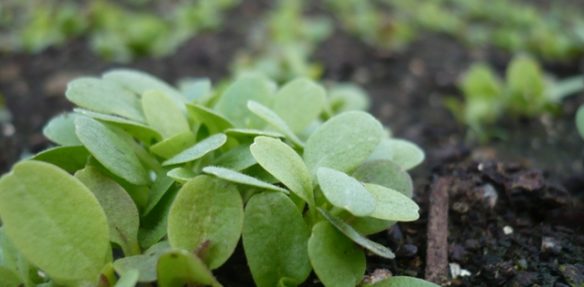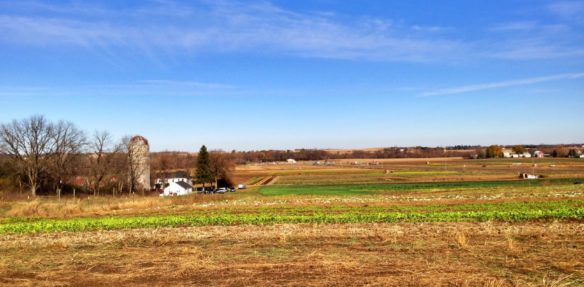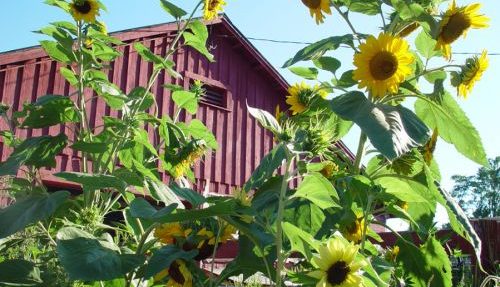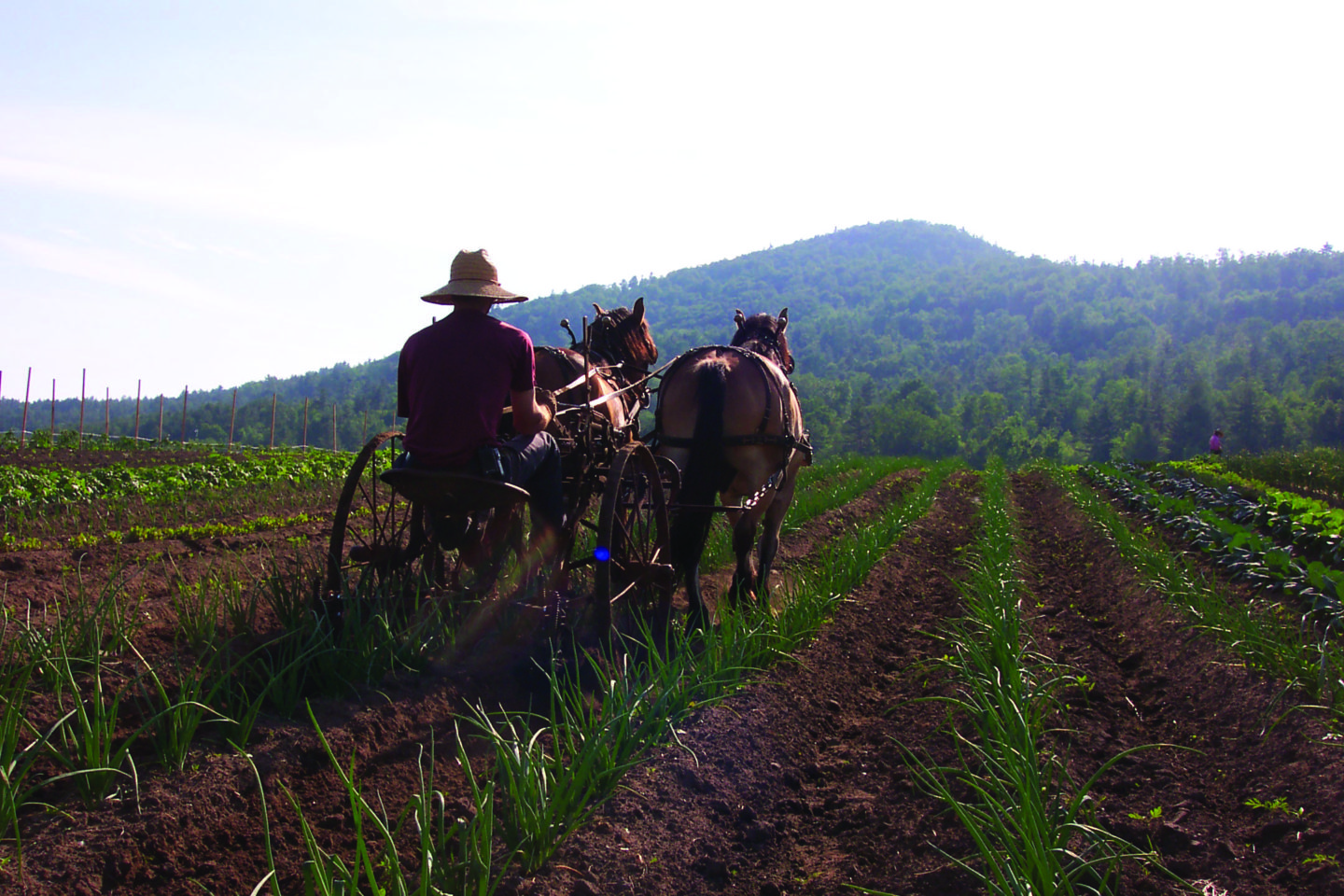
“Don’t pounce on the first thing … there is a lot of land out there.”
– James Graves
Soul-Searching
In many ways, James Graves and Sara Kurak, owners and operators of Full and By Farm, represent the typical beginning farmers of the new food movement. James did not grow up farming. Instead, after graduating college, James realized he wanted to pursue a farm business with local, sustainable, and good land stewardship values, so he moved to New York to become a farm apprentice. While working on a CSA farm, he met his now-business partner, Sara Kurak. Ultimately, the duo decided they wanted to farm their own land.
The process of finding land was not a quick one. First, James and Sara visited Essex Farm in Essex County, New York, for a couple of weeks. The cautious pair wanted to be certain they had found their farming home, so they took off – on bikes – to visit farms across the United States. Upon completing their cross-country tour, they found themselves drawn back to Essex County, where they began their search. The pair fell in love with Essex County’s landscape and sense of community.
James and Sara found that Essex Farm and the people of Essex County shared their spirit and passion for sustainable agriculture. Perhaps more importantly, the land in Essex County was reasonably affordable. With abundant mountains and limited acreage suitable for growing crops, there is little local development pressure. Thus, after working on Essex Farm for about a year, James and Sara set out to visit nearby properties, looking for a good match. They would visit a couple dozen before landing on what became Full and By Farm.
Finding Full and By
Full and By Farm was one of the first properties James and Sara visited, but they didn’t fall in love with it right away. The property consisted of approximately 500 acres, the vast majority of which were wooded mountains. It was an old dairy farm that had been sold to non-farmers in the early 80s and had sat abandoned for several decades. According to James, “you could definitely tell.” The next owner logged the property quite heavily, which took a toll on the land. James explains: “You walked onto the property and not only were all these barns falling down but the fields were a mess so you couldn’t just walk right in.”
However, the current landowner at that time, the Eddy Foundation, learned that Sara and James were looking for land and reached out to them with a compromise. (James explains that teaming up with the Eddy Foundation happened organically: “The community is only around 700 people. As soon as someone discovers you’re looking for property, all these opportunities pop up.”) The Eddy Foundation explained that there was a possibility that it could subdivide about 100 acres of sloping fields at the base of the mountain for James and Sara’s use. The Eddy Foundation would retain the mountain portion and cover it with a conservation easement. The Eddy Foundation would purchase a conservation easement on James and Sara’s 100 acres, as well.
In light of the subdivision and proposed easement purchases, the Eddy Foundation-owned land became James and Sara’s best option.
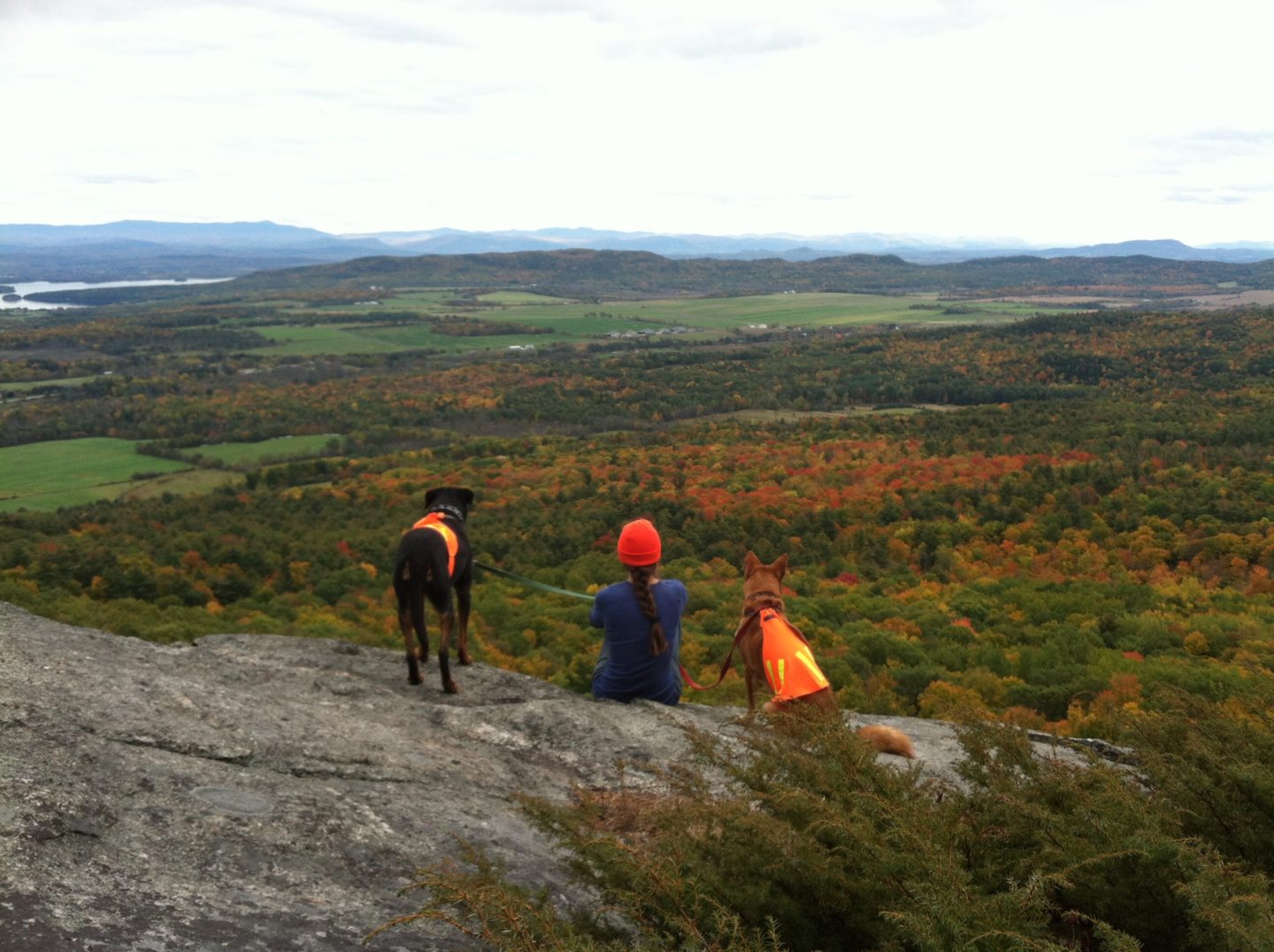
Negotiations
The entire purchasing process, which included negotiating, drafting, and editing a conservation easement, took about a year. “It was a pretty drawn-out process,” James admits. During that time, James and Sara leased the property from the Eddy Foundation for free.
James confesses that there were frustrating aspects to the negotiations. For example, the Eddy Foundation pushed for stronger protections of the natural resources on the property, while James and Sara sought to maximize their options and flexibility in case of unforeseen challenges down the road. The conservation easement on their 100 acres is very specific – they had to negotiate which waterways would require buffers and how wide those buffers needed to be, whether the easement would dictate hay-making dates in order to protect grassland breeding birds, what development rights would remain, and where exactly houses could be built on the property. In the end, the parties developed a document that Sara and James thought was a reasonable compromise.
One example of this compromise is reflected in the conservation easement’s provision related to hay-making. The easement states:
“Grantor [the farmer] shall consider impacts to grassland-breeding birds when conducting agricultural activities in pastures, hayfields, and other open areas. Grantor is encouraged to harvest grassland fields after July 15th of any year, in order to avoid disturbing nesting birds. Grantor is also encouraged to follow a hayfield harvesting pattern of either mowing straight to the center of the hayfield and then gradually working toward the edges, or starting with areas less conducive to grassland bird nesting, such as areas next to hedgerows or farm structures. If an unmowed pasture is adjacent to such a hayfield, Grantor is encouraged to start farther from the pasture and work toward it, so that birds can fly to said pasture as a refuge.”
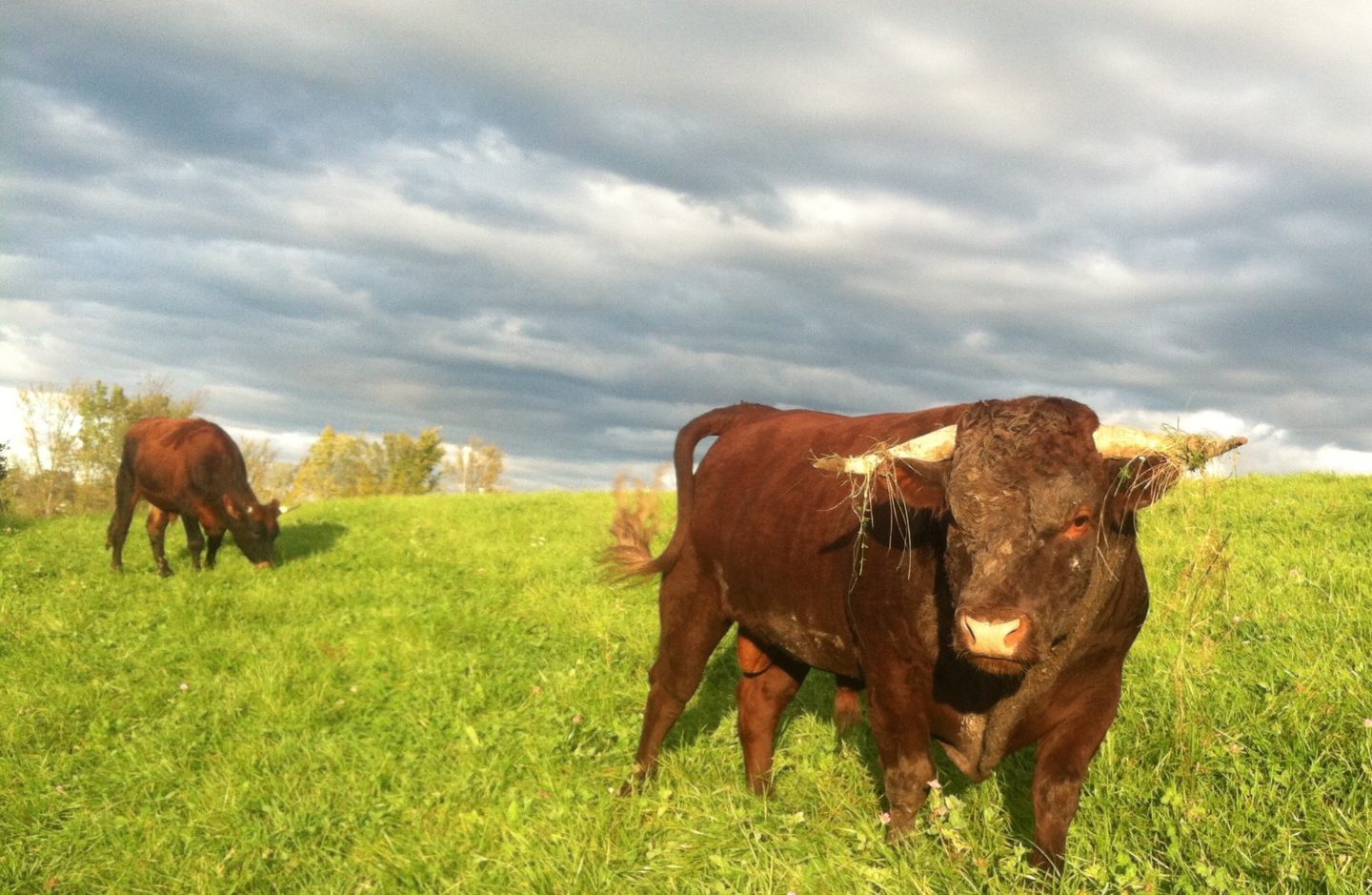
Here, while the easement doesn’t impose any specific practice mandates on Sara and James in regards to haying, it does require them to consider impacts to grassland-breeding birds at their own discretion, and encourages them to adopt specific bird conservation practices.
Negotiating Price
It is worth noting how Sara, James, and the Eddy Foundation arrived at the purchase price. In many cases, a farmer buys a property and then sells a conservation easement to a governmental or nonprofit entity. In this case, the land purchase and the easement sale occurred simultaneously (which is relatively rare). There was no formal appraisal or price assigned to the conservation easement. The parties agreed on the low end of the basic price per acre for farmland in the area ($1,000), and multiplied that by the 72 arable acres in the property (even though Sara and James steward the 28 non-arable acres of the land they cannot farm).
James and Sara now own the 100 acres of fields at the base of the mountain, while the Eddy Foundation owns the 400 acres in the mountains as well as an easement on James and Sara’s 100 acres. Ultimately, James and Sara paid a total of $72,000 for the land.
Easement Compliance
Since the purchase, the Eddy Foundation monitors Full and By Farm to ensure that James and Sara are complying with the terms of the easement. The easement requires that the two parties meet once each year to walk the property together and review the condition of the property and the farmers’ compliance with the terms of the easement. This monitoring has consisted primarily of meetings between James, Sara, and some or all of the board members of the Eddy Foundation. In these meetings, the parties discuss any changes James and Sara are making in management and infrastructure development. “Since our farm has a town road running through the middle, our activities are rather transparent – if a board member has a question about something they see, they ask us about it,” James explains.
James and Sara have maintained a good relationship with the Eddy Foundation’s staff, which helps the monitoring process run smoothly. James thinks that what keeps his and Sara’s relationship with the Eddy Foundation healthy is that Full and By Farm goes above and beyond what is required by the easement, in terms of conserving the land. For example, they perform a lot of farming work with draft horses instead of tractors. Passion for sustainable farming and land conservation unites the two parties. That said, the easement provisions are clear and detailed, so James feels confident that both parties are protected, regardless of their relationship.
Ultimately, James and Sara haven’t found any aspects of the easement particularly prohibitive or challenging to work around, as they initially had feared. In fact, the easement is more generous to the farmers than James initially envisioned it would be. For example, there is nothing in the conservation easement requiring that they farm organically. Additionally, there are some wildlife conservation provisions that the Eddy Foundation pushed for, such as hunting limitations.
A Word Of Caution
James warns young farmers that taking the step of purchasing land is an enormous commitment. James and Sara suffered from a lot of anxiety throughout the process, thinking about what they were agreeing to and wrestling with the terms of the conservation easement. “[The easement] was a real emotional hurdle,” James admits.
Looking Forward
James and Sara have high hopes for the future of Full and By Farm. James acknowledges that a lot of their hard work farming has been motivated by their youthful enthusiasm, and he hopes they don’t burn out. Although they don’t make a lot of money operating under their self-imposed sustainability guidelines, James believes in their farm: “It’ll be interesting to see how it evolves and I hope it continues to serve the community in a way that has an eye towards the environmental impact of its methods.”
For aspiring farm seekers, James advises, “Make sure to do a variety of apprenticeships. Don’t be in a hurry. Don’t pounce on the first thing… There is a lot of land out there.” He adds, “We have no regrets about looking for over a year. During that time, we were so anxious to get going. But in hindsight, I’m glad we looked at as many pieces of land as we did.”
